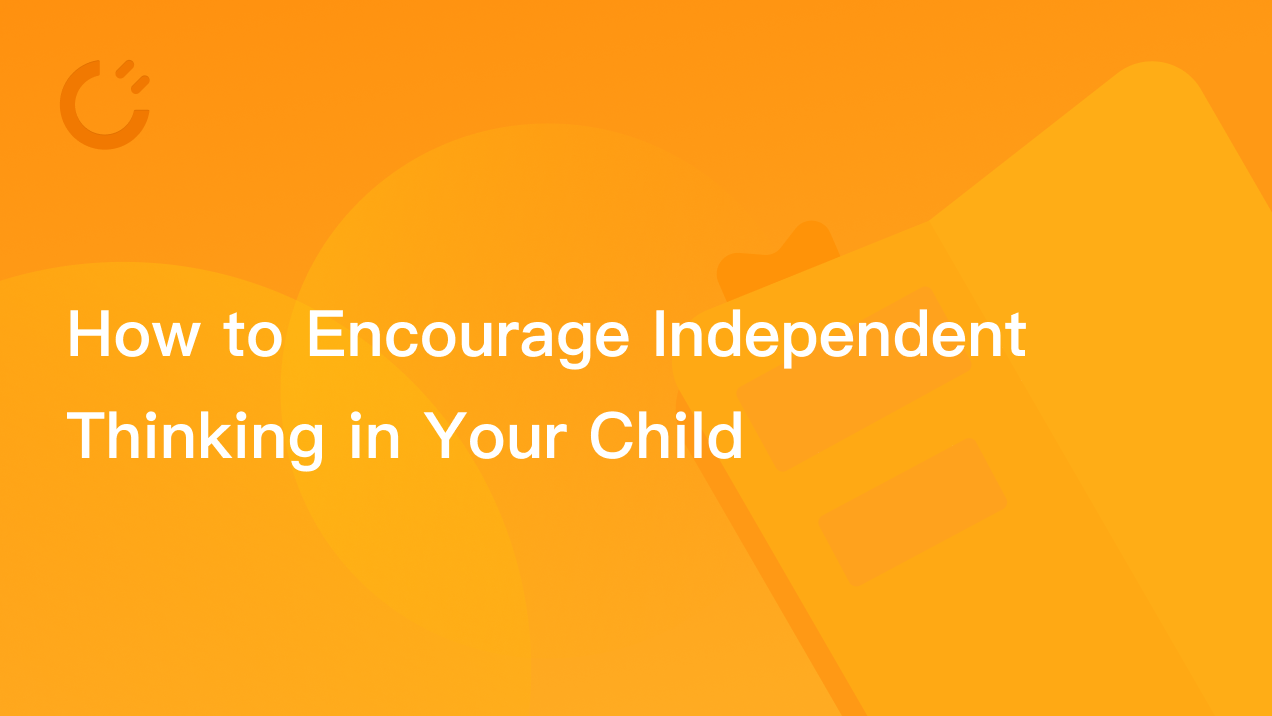How to Encourage Independent Thinking in Your Child
by Ahmed, Jul 04 2022

Einstein once said, “The development of general ability for independent thinking and judgment should always be placed foremost, not the acquisition of special knowledge.” The ability to think independently sets the foundation for all other mental development—it is the prerequisite to your child’s creativity, builds confidence, and leads to better academic performance.
It is so much more important than simply memorizing knowledge. But nowadays, parents often overlook the everyday little things that they could be doing to teach their children to think for themselves. So, what can you do to improve your child’s ability to think independently?
- Ask Follow-Up and Open-Ended Questions
- Practice through Graphic Visualization
- Practice through Storytelling
Ask Follow-Up and Open-Ended Questions
If you want your child to start thinking independently, the first thing you should do is to start thinking like a child yourself. When you were a child, didn’t you always ask “and then?” or “why?” So do the same with your child.
For instance, whenever your child finishes eating a snack, you can ask, “And where will you throw the wrapper?” Most likely your child will answer, “In the garbage can.” You can then follow up with, “Then where does it go after it goes into the garbage can?” As long as time allows, keep going! It’s fun to see how far down this line of questioning you can get with your child.
Whenever you have the chance, ask an open-ended question, instead of a close-ended one. Close-ended questions will stop your child at just one word. If you asked your child whether or not he likes to play, he’d simply answer “yes,” and that would be the end of it.
Instead, ask your child what he enjoys playing. Asking open-ended questions encourage your child to think of other answers without being confined. It encourages discussion and gives control to your child. Remember, if you started with a close-ended question, you always have the chance to turn it into an open-ended one by adding a simple “why?” at the end.
Practice through Graphic Visualization
This one is easy. Draw a simple shape on a piece of paper, such as a circle, then let your child guess what it is. Ask your child what he thinks the shape looks like. Your child may have an assortment of silly or even far-fetched answers—that’s okay. There are no wrong answers here. The purpose is to get your child to think creatively. Let his imagination run wild. And again, keep asking your child why he associated the items he picked with the shape you drew.
Practice through Storytelling
Next time you tell your child a story, don’t just stop at the ending. At the end of the story, ask your child, “What do you think will happen next?” Let your child brainstorm for a while, then have him come up with what he thinks might logically follow. Alternatively, you can also stop at key turning points in a story and ask your child, “What would have happened if things had turned out differently?”
Finally, there’s a storytelling game fun for the whole family that you may have heard of. The game starts with everyone agreeing on a story topic. Then each family member takes his or her turn making up the next part of the story. The point here is to remember what was said before you, and then try to create a logical or even ridiculous but imaginative following part.
So next time take advantage of all the wonderful opportunities that arise every day and use them to help your child practice thinking independently. As long as you pay attention and communicate with your child, his mind is surely able to make great strides. Remember, with all of the exercises mentioned above, there are no right or wrong answers—the point is to get your child to start thinking on his own.
